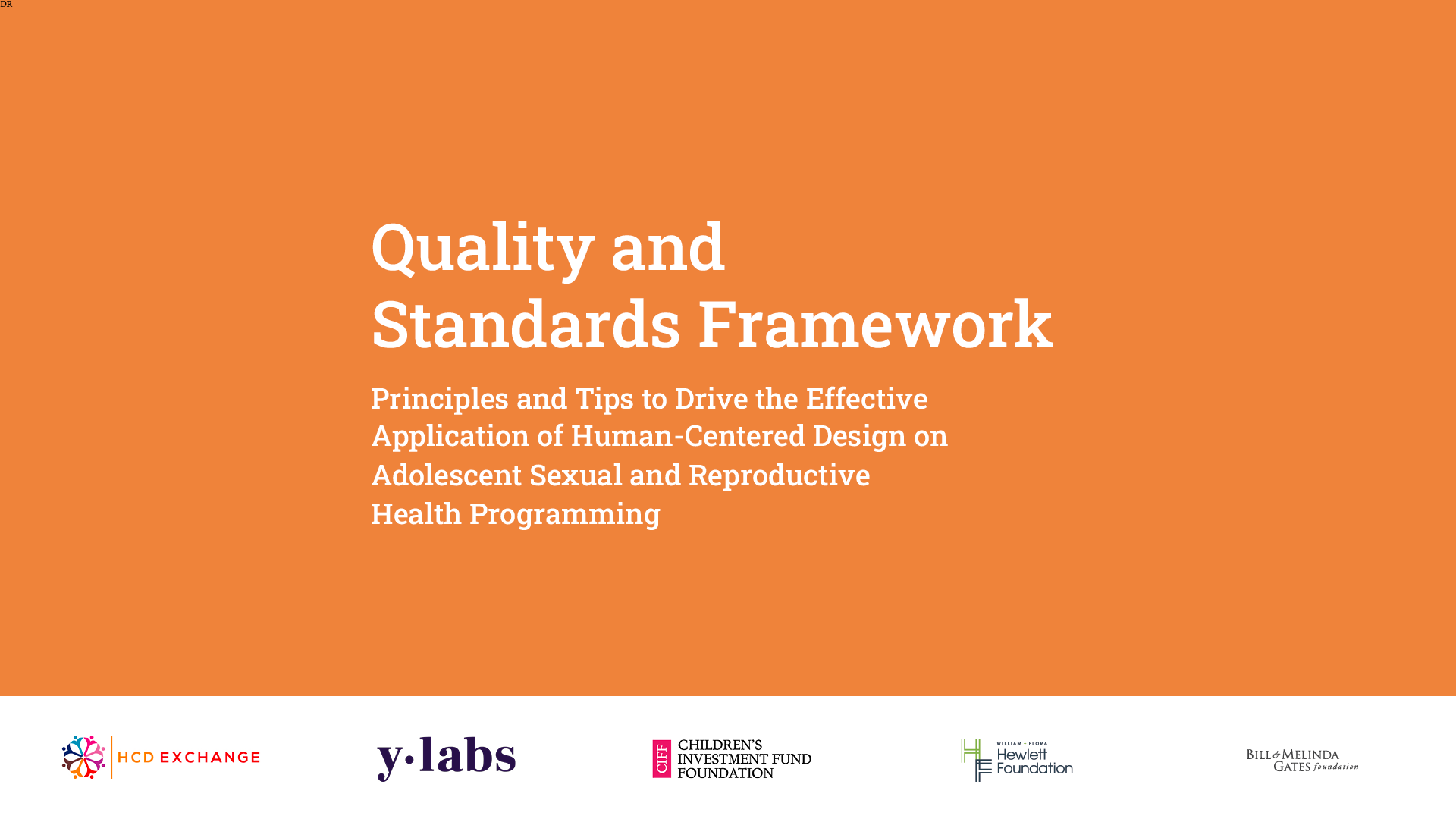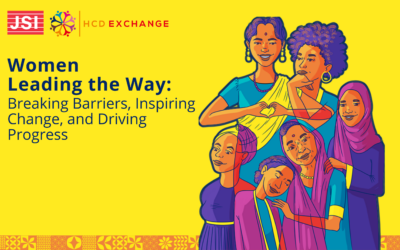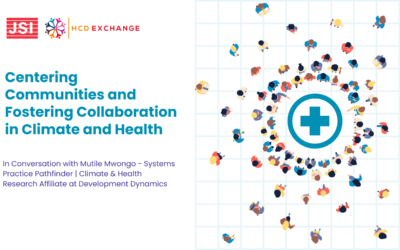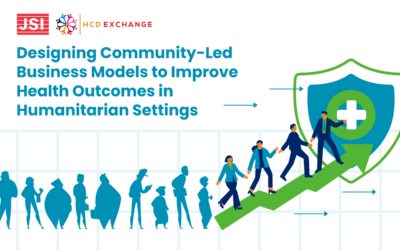By Liz McNeil
Senior Community Manager, HCDExchange
Liz is a passionate advocate for sexual and reproductive health and rights and is committed to creating a vibrant, inclusive, and participatory CoP for our members. Liz has eight years of experience working in social impact and social enterprise across East Africa. Before joining the HCDExchange, Liz ran a social enterprise in Tanzania, served as the Business Development & Partnerships Manager for East/Horn of Africa with AFRIpads.
Hi Liz, the first-ever Quality and Standards Framework for using human-centered design (HCD) in adolescent and youth sexual reproductive health (AYSRH) programs was presented at ICFP 2022. Can you tell us a bit about the event?
We were lucky to have the opportunity to share the first-ever Quality & Standards Framework for using HCD in AYSRH programs at a dedicated session at the ICFP. So we got to share this Framework with practitioners who were interested in learning more about how to use the HCD methodology in their programs, but might not necessarily know how to go about doing this. The framework is a practical, actionable resource to guide how to go about applying HCD approaches with tips and tools. Ultimately this [the Framework] is about guiding quality HCD practice and starting to create a benchmark, which is relatively new for this specific field of practice (HCD+AYSRH).
The event itself was interactive and designed so that people with all levels of experience could participate and contribute. This is also very much how the Framework has been intentionally designed. We had lively speakers setting the scene and then focused round table discussions on the top principles (there are eight principles) selected by a group vote. Everyone’s an expert in their own work, so we had rich discussions with practitioners about tangible ways they could bring the principles to their work, what success looks like, and how we can measure quality.

What stood out for you?
I was blown away by the overall interest from practitioners in human-centered design. There were great discussions about HCD being an effective approach in improving the way family planning initiatives meet the needs and desires of their user groups on the one hand. On the other hand, how HCD approaches can be used to better engage young people both as users of a solution and also as young members of project teams. There was a lot of intrigue from practitioners who hadn’t yet used HCD but saw the potential and were excited to take ideas back to their project teams.
What were the most interesting questions raised about the framework?
Resources
How to ensure the resources for implementing the Framework was the biggest question raised. Among all of the competing priorities and limited financial resources, I definitely understand this!
To create a shift from something as an exception to a standard practice takes commitment at many levels from different influencers in a sector ecosystem. So for example, endorsement from donors and grant makers who see the value is one critical ingredient. But also buy-in from within the different levels of an implementing organization – right from signing off on budgets to practitioners being able to operationalize this work on the ground is also key. This Framework challenges the status quo of programming and pushes all HCD + AYSRH stakeholders to pursue the absolute best practices in all they do across their project lifecycle.
Getting started
The other big question was about how to get started. With eight principles and detailed tips for implementing each without a budget can be daunting. So there were questions around where to begin, how to plan for it, levels of expertise. These conversations also helped increase the understanding that not all the principles needed to be implemented in one go, and a stepwise approach could be used to select some of the principles.
Any intentional mindset shifts or steps to improve quality of design practice is a step in the right direction. In an ideal world, all programs would apply the entire framework, end-to-end throughout their projects, and the framework actually has the information to support projects to do that! That being said, it is a big commitment of time, resources and accountability.
In order to get the ball rolling, I’d recommend for project teams to look through and prioritize. See what your organization is doing well and is committed to, and then see if the Framework can offer a few additional suggestions, or help to bring that quality level consistently across the project life cycle.
Another approach is to do a bit of an internal audit on the project or organization and identify one or two or the principles and commit to those. It’s easiest to start thinking about this in the project planning phase, so that a project team can start with these tips in mind for timelines and budgets, but there are also small wins that practitioners can work towards even when starting mid-project.
What are the next steps for the Framework?
We are preparing now to do case studies with organizations who are using the Framework. We will document their application of the framework to increase the understanding of its utilization and value addition to their programs. Based on this learning, the Framework will be iterated to improve the useability. This Framework is version 1.0 and as a community that keeps evolving and learning, we are committed to iterating on the Framework to keep it recent and relevant.
We also want to help organizations to put this Framework into practice and so one thing that has been talked about is some kind of self-assessment tool to help organizations with that internal audit I mentioned earlier. We could strengthen the whole experience a project team has with the Framework by creating complementary tools that can support teams to operationalize the Framework more easily.
Our team is also thinking about how we might be able to lead hands-on engagements with project teams to work the principles into project proposals and support with implementation. This is exciting future thinking for the HCDExchange as a Knowledge hub that also offers project support and assistance to move toward quality practice of HCD in the AYSRH programming space and wider public health sector.




